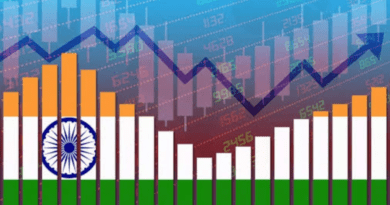New: NASA Visualization Takes Viewers To The Black Hole’s Edge
Did you ever think about what would happen if you fell into a black hole? A new, immersive visualisation on a NASA machine lets people dive into the event horizon, which is the point where you can’t get back out of a black hole.
YouTube has a 360-degree view of the dive.
The labels on this picture of a journey towards a giant black hole draw attention to many of the interesting effects of general relativity that happen along the way. The NASA supercomputer created the image, which tracks a camera as it approaches, swiftly orbits, and then traverses the event horizon of a massive black hole resembling the one at the heart of our galaxy. NASA’s Goddard Space Flight Centre/J. Schnittman and B. Powell took the picture.
The visualisations were made by Jeremy Schnittman, an astrophysicist at NASA’s Goddard Space Flight Centre in Greenbelt, Maryland. “Many people ask me about this, and modelling these difficult-to-picture processes helps me connect the math of relativity to things that happen in the real world,” he said. I did two simulations as a stand-in for an adventurous astronaut. In the first, a camera just misses the event horizon and slingshots back out. In the second, the camera crosses the border and is doomed to die.”
There are various types of visualisations that you can get. Like tour guides, explainer movies show the strange effects of Einstein’s general theory of relativity. Some versions are 360-degree movies that let viewers see the whole trip, and others are flat all-sky maps that let people see the whole sky.
Schnittman and Brian Powell, another scientist at Goddard, worked together to make the visualisations. They used the Discover supercomputer at the NASA Centre for Climate Simulation. They created ten terabytes of data, roughly equivalent to half of the estimated text material in the Library of Congress. The project ran for five days on just 0.3% of Discover’s 129,000 processors. On a normal notebook, it would take more than ten years to do the same thing.
The goal is a supermassive black hole that is 4.3 million times the mass of the sun. This is the same size as the monster at the centre of our galaxy, the Milky Way.
Schnittman said, “Most people would choose to fall into a supermassive black hole.” Stellar-mass black holes have event horizons that are much smaller and stronger tidal forces that can tear apart things coming towards them before they reach the horizon. These black holes may contain as much matter as 30 times the mass of the sun.
The pull of gravity on the end of an item that is closer to the black hole is stronger than the pull on the outside. As things fall through space, they spread out like noodles. Astrophysicists call this process “spaghettification.”
This fake black hole’s event horizon is about 16 million miles (25 million kilometres) across, which is about 17% of the distance between Earth and the Sun. An accretion disc, a flat, spinning cloud of hot, glowing gas, surrounds it and helps us see it during the autumn. Also, structures called photon rings glow. They form closer to the black hole because light has gone around it at least once. The scene is finished off with a background of the bright sky as seen from Earth.
Check out a different visualization that follows a camera as it gets closer to a supermassive black hole, falls into it, rapidly orbits it, and then leaves it. People can look around during the trip in this immersive 360-degree version. NASA’s Goddard Space Flight Centre/J. Schnittman and B. Powell took the picture.
The glow from the accretion disc and background stars gets brighter as the camera gets closer to the black hole, becoming faster and faster than light itself. It’s kind of like how the sound of a racecar coming up behind you gets louder. If you look in the direction of movement, their light looks whiter and brighter.
At the start of the film, the camera is almost 400 million miles (640 million kilometres) away, and the black hole quickly fills the view. The black hole’s disc, the photon rings, and the night sky all get more and more distorted as they move. As their light travels through the increasingly distorted spacetime, it even creates multiple pictures.
The camera makes almost two full 30-minute circles in the three hours it takes to fall to the event horizon in real time. But from far away, it would never look like it got there. As you get closer to the horizon, spacetime gets more messed up. The camera’s image would slow down and then appear to stop just before it. This is why black holes were first called “frozen stars” by scientists.
At the event horizon, space-time moves inward at the speed of light, which is the fastest speed possible in the universe. At the black hole’s centre, a singularity—a point with no dimensions—is where the rules of physics as we know them stop working. Both the camera and the space-time it’s moving through rush towards this singularity.
“If the camera surpasses the horizon, it will be completely destroyed in a time span of 12.8 seconds,” Schnittman stated. The singularity is only 79,500 miles (128,000 km) away. In the blink of an eye, this last part of the trip is over.
In the other option, the camera moves closer to the event horizon but never crosses it. It then gets away safely. If a pilot flew a spaceship on this 6-hour round-trip trip while her coworkers on the mothership stayed far away from the black hole, she would arrive 36 minutes earlier than her coworkers. That’s because time moves more slowly near a strong gravitational source and when you’re going fast.
According to Schnittman, things could become worse. She would have been much younger than her shipmates when she returned if the black hole had spun more quickly, like the one in the 2014 film “Interstellar.”




